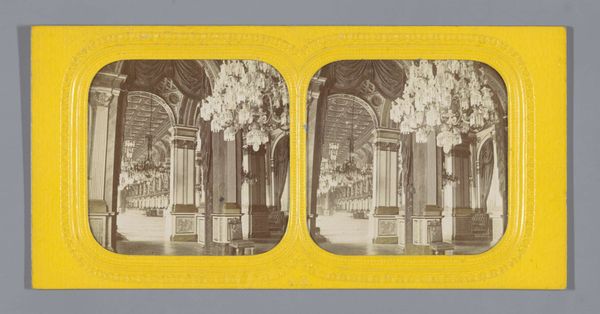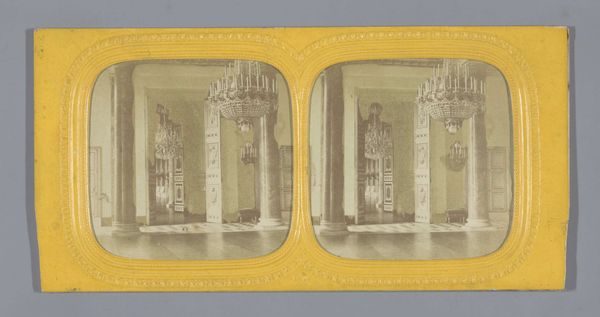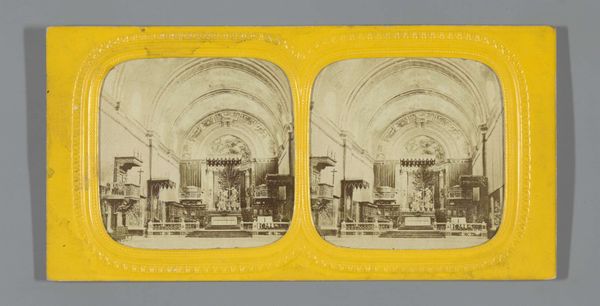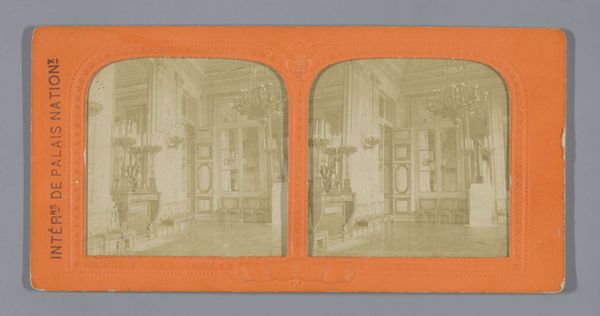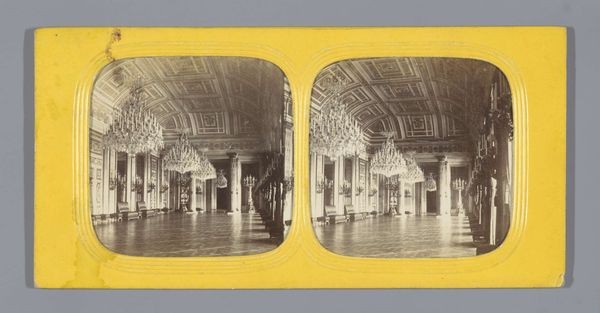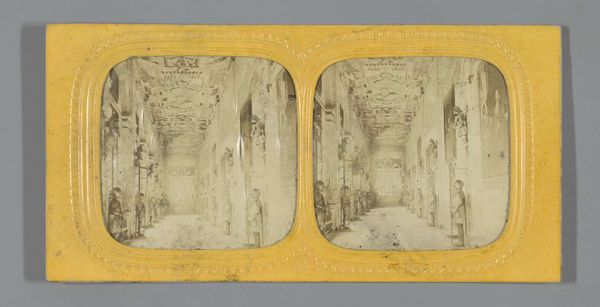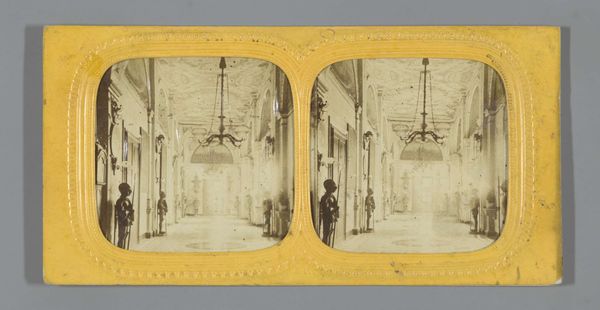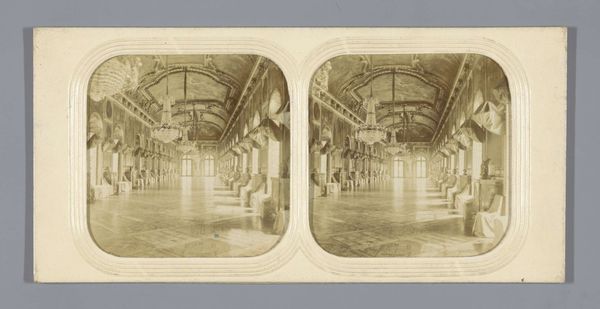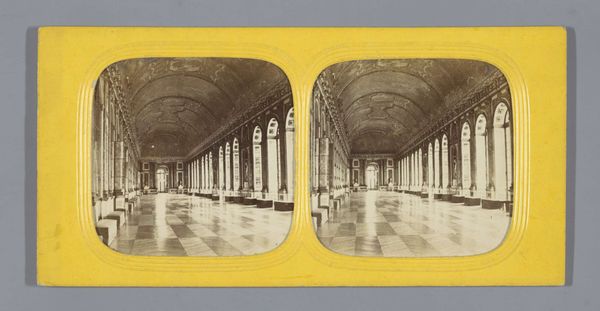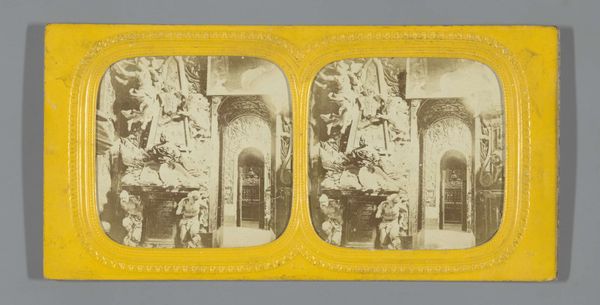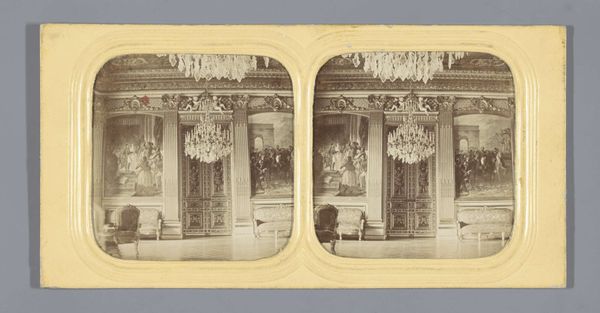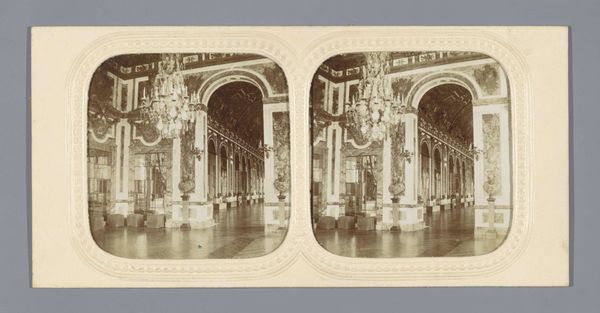
Foyer van de opera van Parijs, ofwel de Opéra Le Pelentier of de Opéra Garnier 1855 - 1875
0:00
0:00
Dimensions: height 87 mm, width 175 mm
Copyright: Rijks Museum: Open Domain
Editor: This photographic print, titled "Foyer van de opera van Parijs," also known as the Opéra Le Peletier or the Opéra Garnier, dates sometime between 1855 and 1875. The sepia tone gives it such a dream-like quality; it’s like looking into the past. What can you tell me about this opulent scene? Curator: It's interesting to consider how photography itself, in the mid-19th century, served to democratize access to spaces of elite culture. The Paris Opera, particularly the Garnier, was a symbol of Second Empire society. Do you see how this photograph, likely produced as a stereo card for mass consumption, allowed middle-class individuals to "visit" this exclusive space from their homes? Editor: That's fascinating! It’s a sort of proto-virtual tour, using new technology to share art. But, wouldn’t paintings of the Opera have achieved a similar thing? Curator: In some ways, yes. But photography carried the burden of truth and documentation at the time. It offered a seemingly objective view. Also, the production of photographic cards was becoming a commercial industry of its own; a very efficient way to promote the Opera's cultural status and grandeur far and wide, both actually and aspirationally. Consider the implicit power dynamics, the encoding and reinforcement of societal hierarchies embedded within seemingly harmless domestic entertainment. Editor: I see what you mean; it’s more complex than just showing off beauty. What’s also curious is the doubling of the image, side by side. Does that serve a purpose, besides being how they were originally made? Curator: The stereoscopic format enhances the sense of depth and immersion, almost inviting the viewer into that space. This contributes to a vicarious experience. We’re not just looking, but momentarily placed within this spectacle of Parisian high society. Editor: This makes me appreciate it in a whole new way. I never thought of a photograph as a social or political object. Curator: Photography then, like social media today, can blur the lines between experience, representation, and societal aspiration. It’s all about context. Editor: It’s been so helpful understanding its position at the nexus of art, society and politics; thank you.
Comments
No comments
Be the first to comment and join the conversation on the ultimate creative platform.

